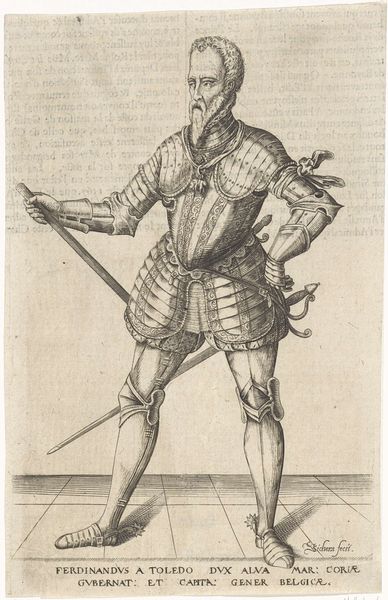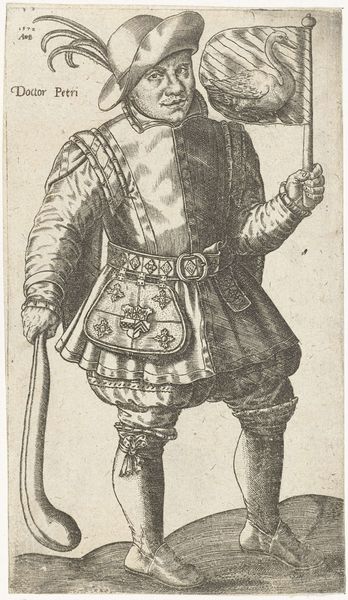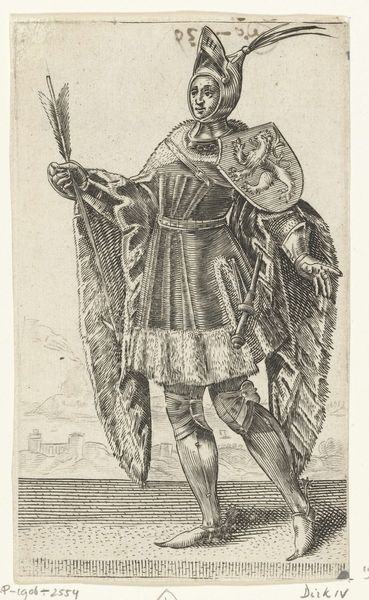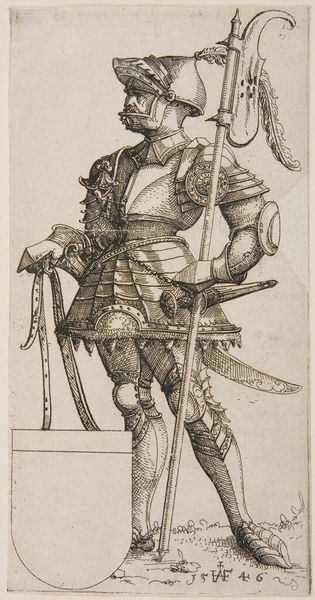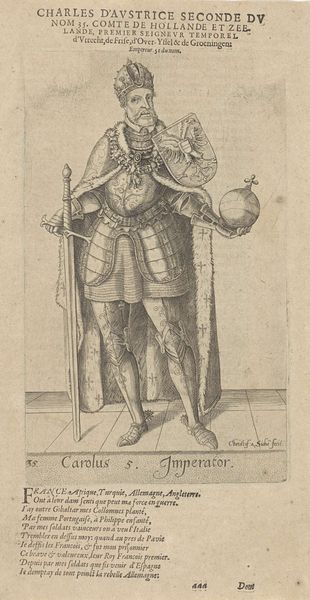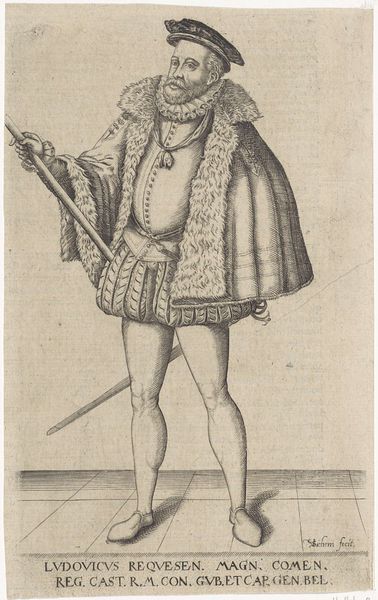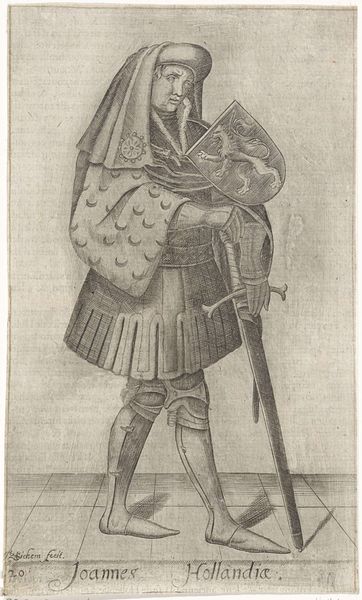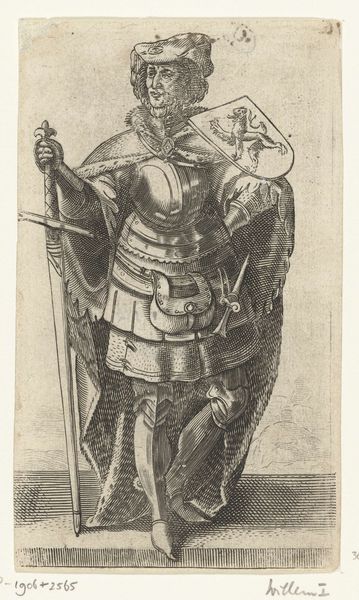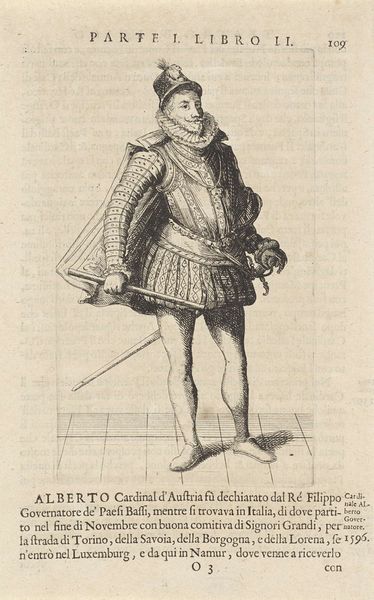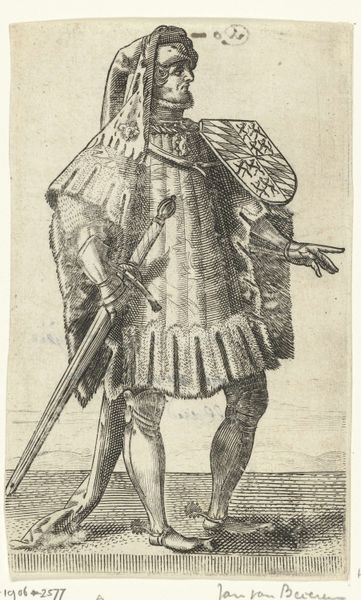
Portret van Emanuel Philibert, hertog van Savoye before 1601
0:00
0:00
christoffelvansichemi
Rijksmuseum
print, engraving
#
portrait
# print
#
mannerism
#
history-painting
#
engraving
Dimensions: height 195 mm, width 120 mm
Copyright: Rijks Museum: Open Domain
Editor: So, here we have a portrait, an engraving really, by Christoffel van Sichem I, titled 'Portret van Emanuel Philibert, hertog van Savoye', placing it before 1601. I’m struck by the figure’s almost total encasement in armor. It seems both powerful and... confined. What stands out to you? Curator: What I see is the meticulous labour embedded in this print. Consider the societal forces at play: van Sichem wasn't just creating an image; he was participating in a system of representation heavily influenced by patronage and the demands of the print market. The engraving medium itself speaks to the rising power of printmaking in disseminating images and shaping public perception. Editor: So the process of printmaking itself becomes part of the meaning? Curator: Precisely. The choice of engraving, the time invested in creating these intricate lines - all contribute to the overall message of power and prestige that Emanuel Philibert, Duke of Savoy, wanted to project. This wasn’t about spontaneous artistic expression; it was a carefully constructed image meant for mass reproduction. What do you make of the sword on the left that cuts off mid-image? Editor: That’s odd. It’s almost like he is crammed in. It pushes him forward almost forcing the audience to examine the rest of his suit, which seems like part of your argument. The image of the individual is almost secondary to the materials used and those portrayed. Curator: It all ties back to understanding art not just as aesthetics, but as a product of labor, materials, and social contexts. Considering the materials, from the paper and ink to the metal from which the original artwork it is portraying would have been cast, it contextualizes art as part of production. Editor: I see what you mean. Looking at it from that perspective, it's much more than just a portrait; it’s a record of craftsmanship and a statement about social status. Curator: Exactly, and seeing that reframes the narrative!
Comments
No comments
Be the first to comment and join the conversation on the ultimate creative platform.
